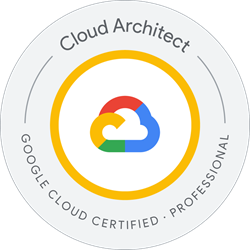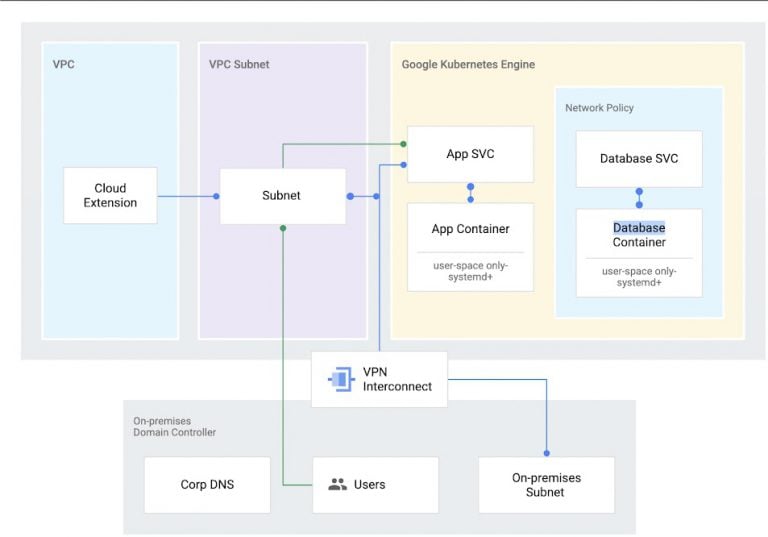Obiettivi | Certificazione | Contenuti | Tipologia | Prerequisiti | Durata e Frequenza | Docenti | Modalità di Iscrizione | Calendario

Il Corso Architecting with Google Kubernetes Engine è un percorso formativo che insegna ai partecipanti come distribuire e gestire applicazioni containerizzate su Google Kubernetes Engine (GKE) e altri strumenti di Google Cloud. Il corso combina lezioni, dimostrazioni e laboratori pratici per esplorare e distribuire elementi di soluzione, tra cui componenti infrastrutturali come pod, container, distribuzioni e servizi, insieme a reti e servizi applicativi. I partecipanti impareranno a comprendere come funzionano i container software, l’architettura di Kubernetes e di Google Cloud, e come funziona la rete di pod in Google Kubernetes Engine. Saranno in grado di creare e gestire cluster di Google Kubernetes Engine utilizzando la console Cloud e i comandi gcloud/kubectl, gestire le politiche di controllo di accesso utilizzando Kubernetes RBAC e Cloud IAM, e monitorare le applicazioni in esecuzione su Google Kubernetes Engine. Il corso contribuisce alla preparazione dell’esame di Certificazione Google Cloud Architect Professional.
Contattaci ora per ricevere tutti i dettagli e per richiedere, senza alcun impegno, di parlare direttamente con uno dei nostri Docenti (Clicca qui)
oppure chiamaci subito al nostro Numero Verde (800-177596)
Obiettivi del corso
Di seguito una sintesi degli obiettivi principali del Corso Architecting with Google Kubernetes Engine:
- Distribuzione e gestione di applicazioni containerizzate su GKE.
- Comprensione dell’architettura di Kubernetes e Google Cloud.
- Creazione e gestione di cluster GKE con la console Cloud e gcloud/kubectl.
- Gestione delle politiche di controllo di accesso con Kubernetes RBAC e Cloud IAM.
- Monitoraggio delle applicazioni su Google Kubernetes Engine.
Certificazione del corso
Esame Google Cloud Certified Professional Cloud Architect; La certificazione valuta la capacità di progettare, sviluppare e gestire soluzioni robuste, sicure, scalabili, altamente disponibili e dinamiche su Google Cloud. L’esame si concentra sulla progettazione e pianificazione di un’architettura di soluzione cloud, sulla gestione e il provisioning dell’infrastruttura della soluzione cloud, sulla progettazione per la sicurezza e la conformità, sull’analisi e l’ottimizzazione dei processi tecnici e aziendali, sulla gestione delle implementazioni dell’architettura cloud e sulla garanzia dell’affidabilità della soluzione e delle operazioni.
Contenuti del corso
Module 1: Introduction to Google Cloud
- Identify Google Cloud services and their function.
- Choose the right Google Cloud services to create your own Cloud solution.
Module 2: Containers and Kubernetes in Google Cloud
- Create a container using Cloud Build.
- Store a container in Container Registry.
- Compare and contrast Kubernetes and GKE features.
Module 3: Kubernetes Architecture
- Conceptualize the Kubernetes architecture.
- Deploy a Kubernetes cluster using GKE.
- Deploy pods to a GKE cluster.
- View and manage Kubernetes objects.
- Conceptualize the migrate for Anthos process.
Module 4: Kubernetes Operations
- Work with the Kubectl command.
- Inspect the cluster and pods.
- View a Pod’s console output.
- Sign in to a pod interactively.
Module 5: Deployment, Jobs, and Scaling
- Create and use deployments.
- Create and run jobs and cronJobs.
- Scale clusters manually and automatically.
- Configure node and pod affinity.
- Get software into your cluster with Helm charts and Kubernetes marketplace.
Module 6: GKE Networking
- Create Services to expose applications that are running within Pods.
- Use load balancers to expose Services to external clients.
- Create Ingress resources for HTTP(S) load balancing.
- Leverage container-native load balancing to improve Pod load balancing.
- Define Kubernetes network policies to allow and block traffic to Pods.
Module 7: Persistent Data and Storage
- Use Secrets to isolate security credentials.
- Use ConfigMaps to isolate configuration artifacts.
- Push out and roll back updates to Secrets and ConfigMaps.
- Configure Persistent Storage Volumes for Kubernetes Pods.
- Use StatefulSets to ensure that claims on persistent storage volumes persist across restarts.
Module 8: Access Control and Security in Kubernetes and Kubernetes Engine
- Define IAM roles and policies for GKE.
- Define Kubernetes RBAC roles and role bindings.
- Define Kubernetes pod security policies.
Module 9: Logging and Monitoring
- Create forensic logs for systems monitoring.
- Monitor your system performance from different vantage points.
- Create probes for wellness checks on live applications.
Module 10: Using Google Cloud Managed Storage Services from Kubernetes Applications
- Understand use cases for Cloud Storage within a Kubernetes application.
- Understand use cases for Cloud SQL and Cloud Spanner within a Kubernetes application.
- Understand use cases for Datastore within a Kubernetes application.
- Understand use cases for Cloud Bigtable within a Kubernetes application.
Module 11: Logging and Monitoring
- Create a continuous delivery pipeline using Cloud Build and start it manually or automatically with a code change.
- Implement a canary deployment that hosts two versions of your application in production for release testing
Tipologia
Corso di Formazione con Docente
Docenti
I docenti sono Istruttori accreditati Google Cloud e certificati in altre tecnologie IT, con anni di esperienza pratica nel settore e nella Formazione.
Infrastruttura laboratoriale
Per tutte le tipologie di erogazione, il Corsista può accedere alle attrezzature e ai sistemi presenti nei Nostri laboratori o direttamente presso i data center del Vendor o dei suoi provider autorizzati in modalità remota h24. Ogni partecipante dispone di un accesso per implementare le varie configurazioni avendo così un riscontro pratico e immediato della teoria affrontata. Ecco di seguito alcuni scenari tratti dalle attività laboratoriali:

Dettagli del corso
Prerequisiti
Si consiglia la partecipazione al Corso Google Cloud Fundamentals Core Infrastructure.
Durata del corso
- Durata Intensiva 3gg;
Frequenza
Varie tipologie di Frequenza Estensiva ed Intensiva.
Date del corso
- Corso Architecting with Google Kubernetes Engine (Formula Intensiva) – 16/09/2024 – 9:00 – 17:00
- Corso Architecting with Google Kubernetes Engine (Formula Intensiva) – 21/10/2024 – 9:00 – 17:00
Modalità di iscrizione
Le iscrizioni sono a numero chiuso per garantire ai tutti i partecipanti un servizio eccellente.
L’iscrizione avviene richiedendo di essere contattati dal seguente Link, o contattando la sede al numero verde 800-177596 o inviando una richiesta all’email [email protected].


